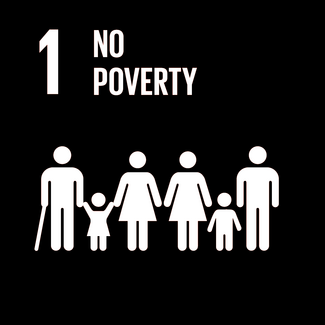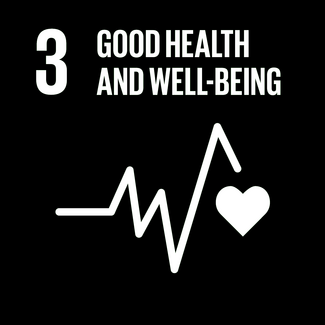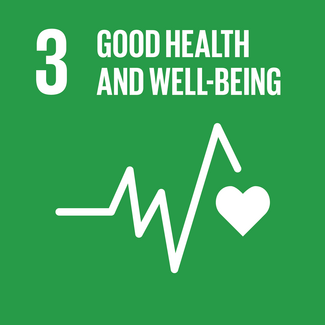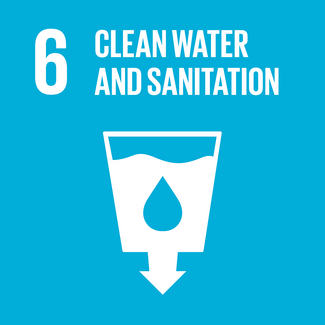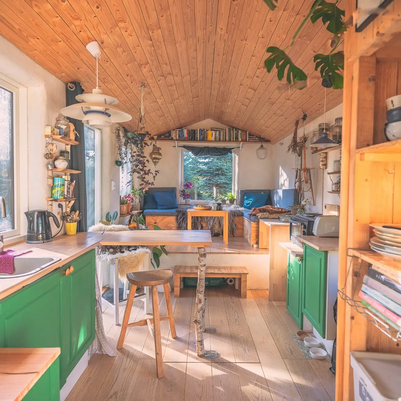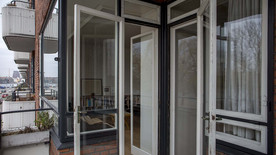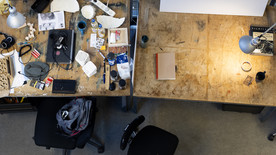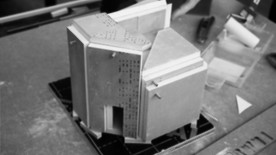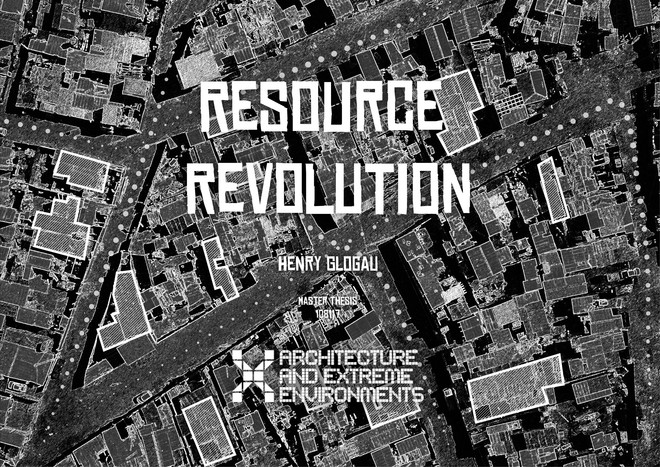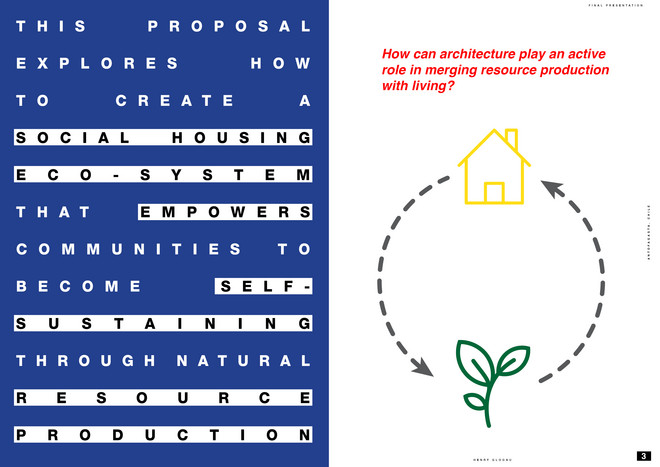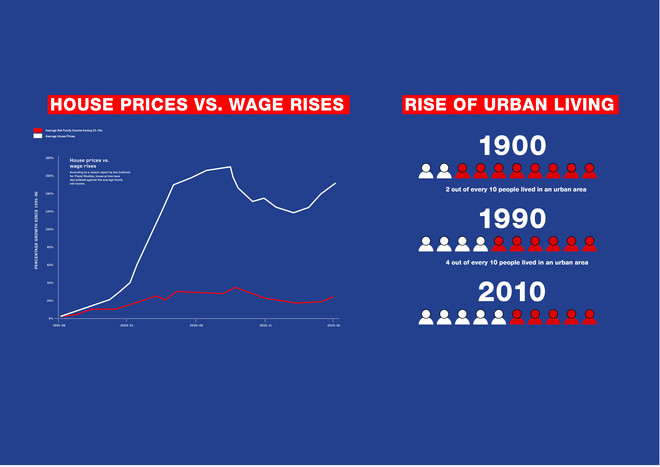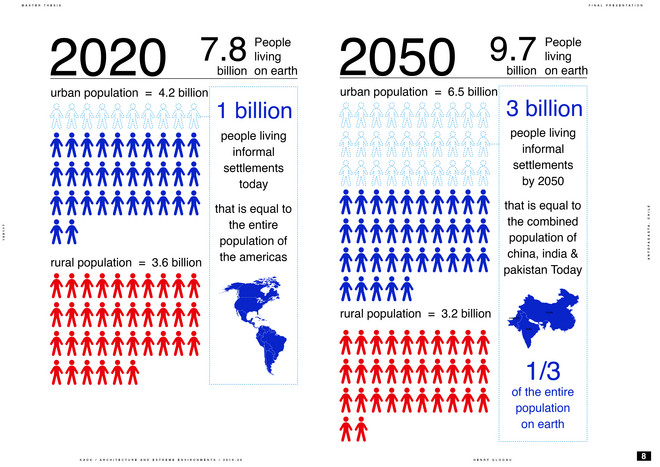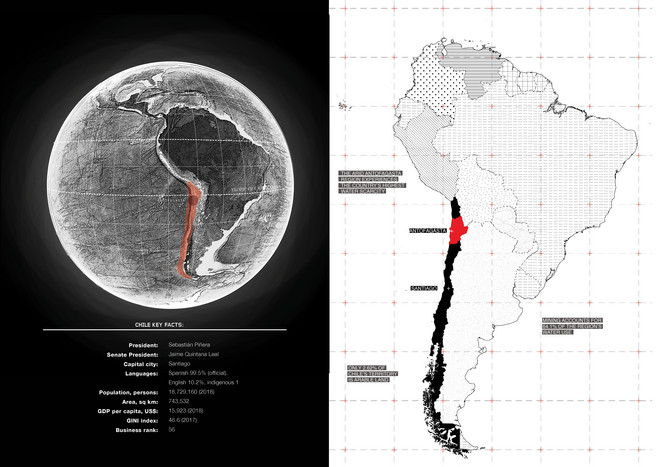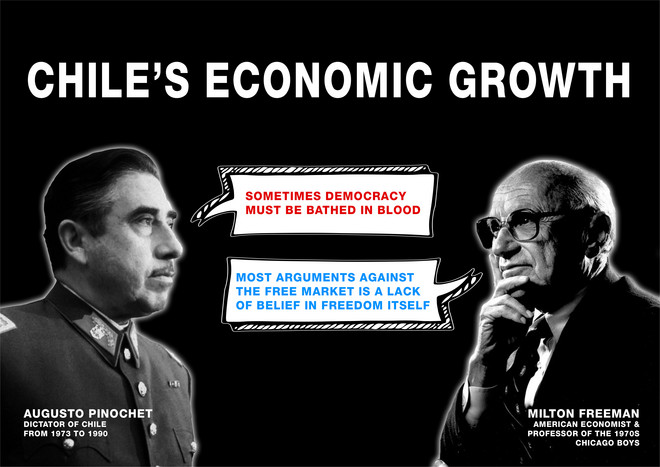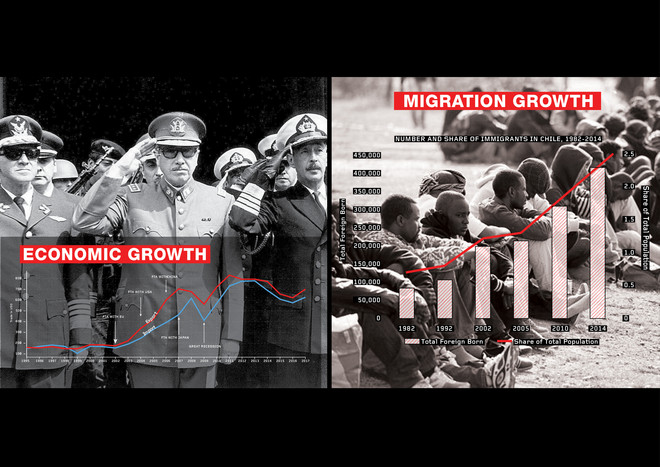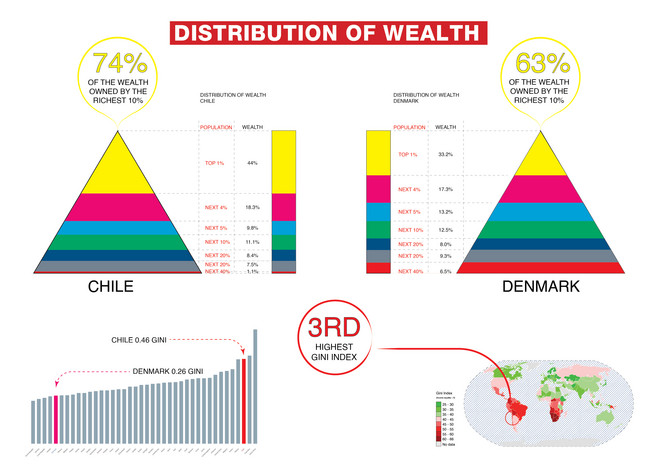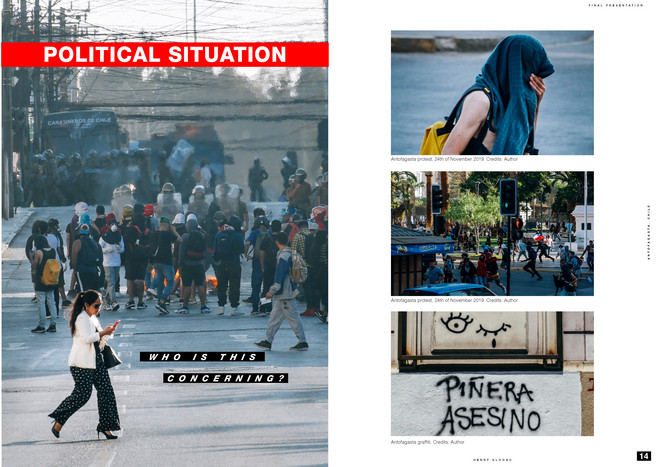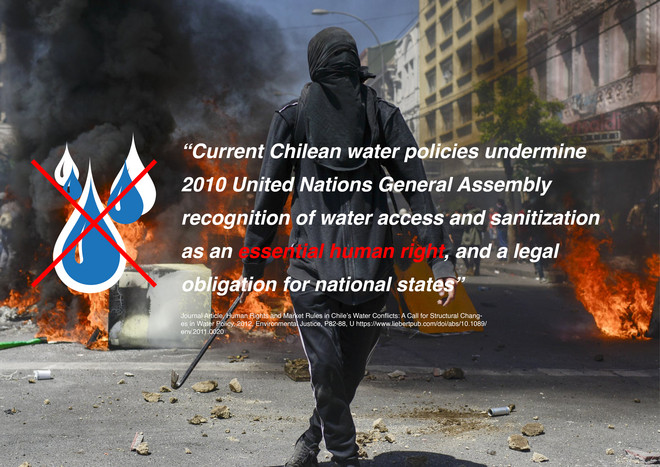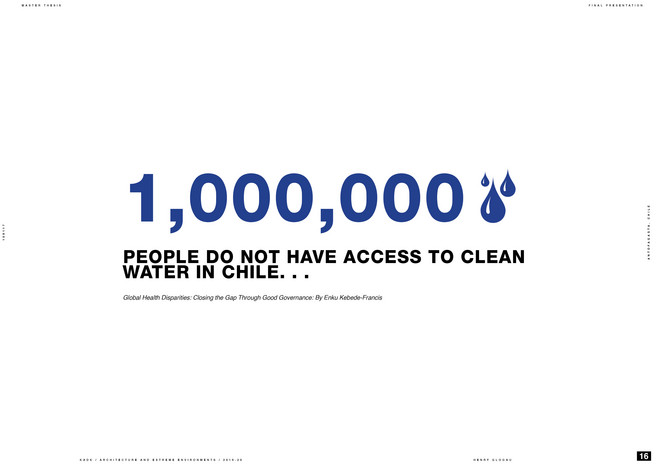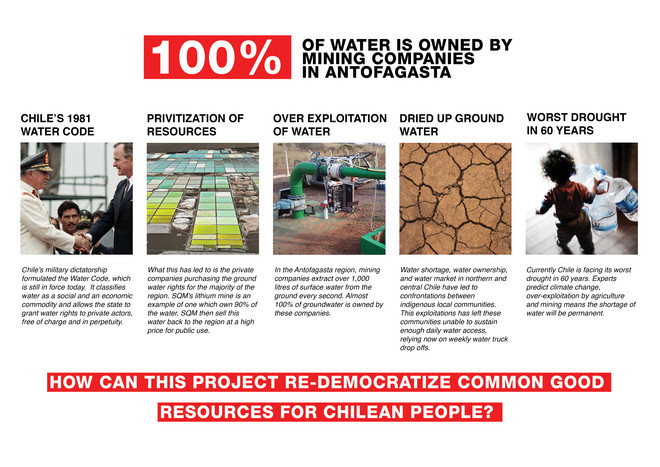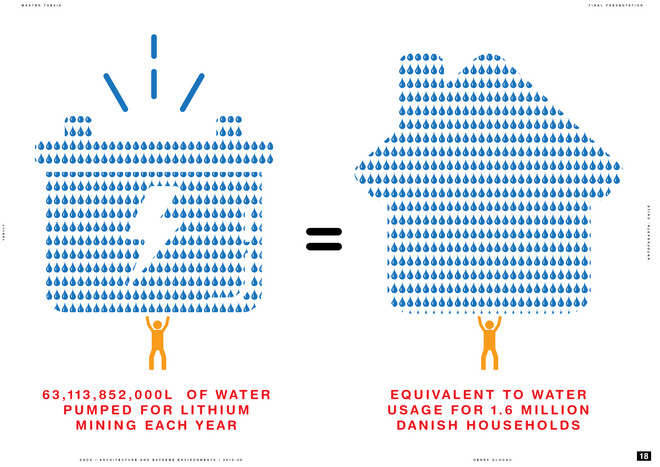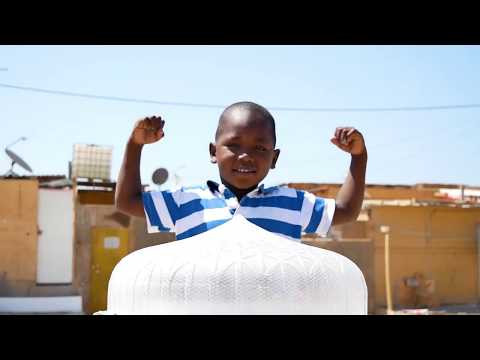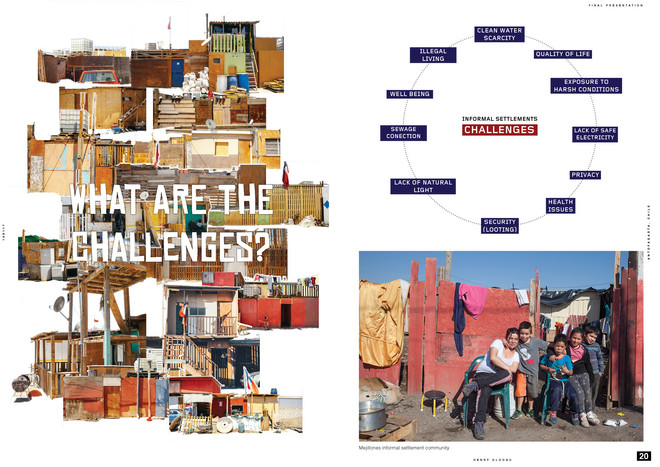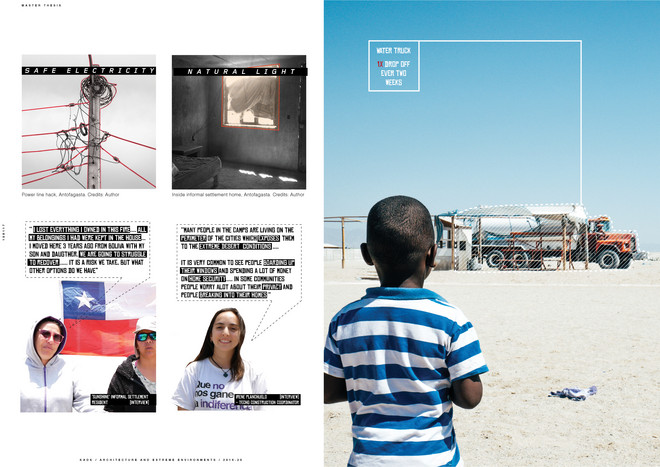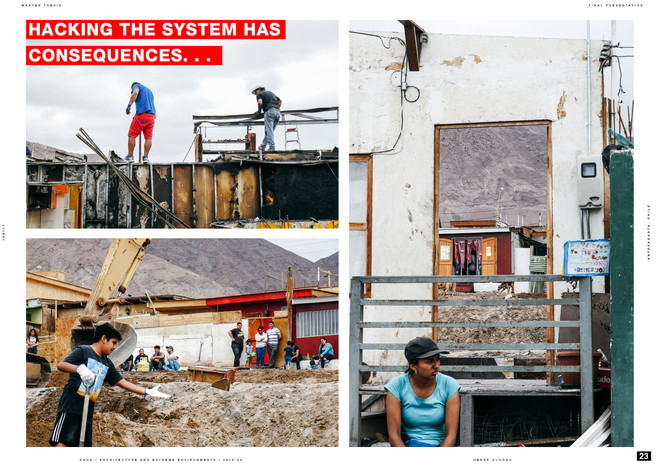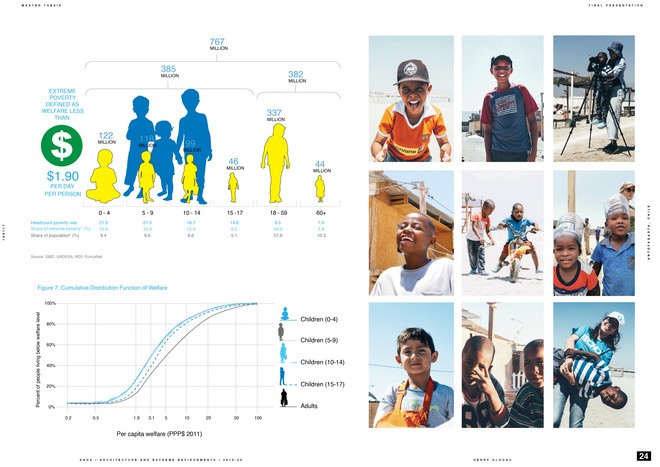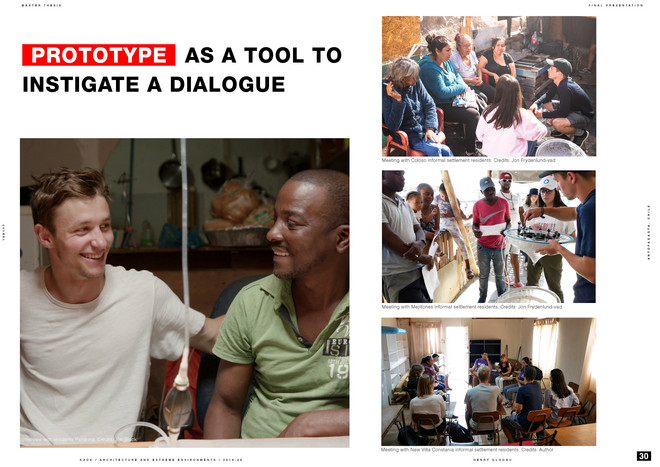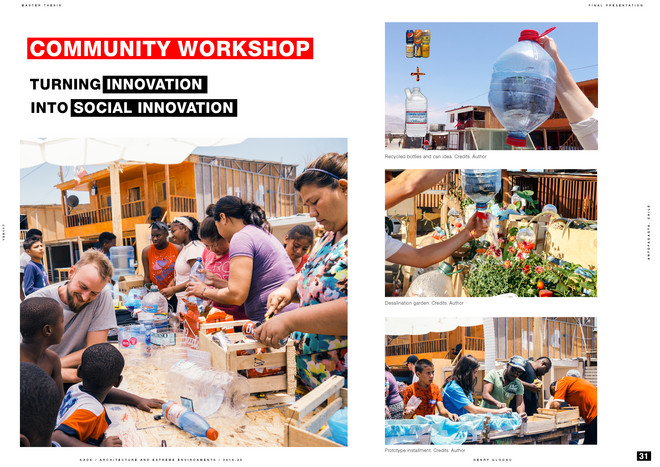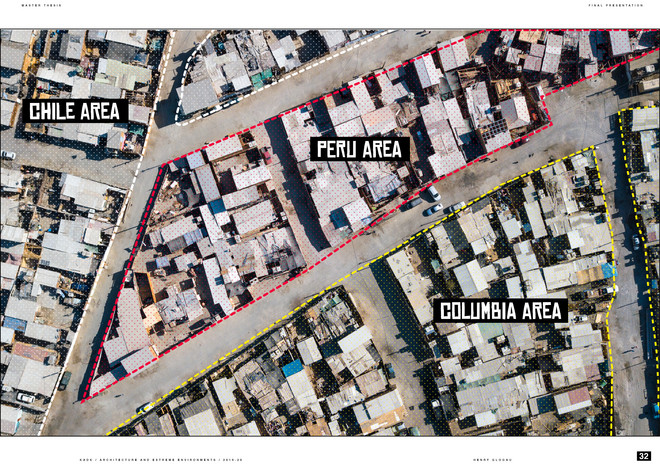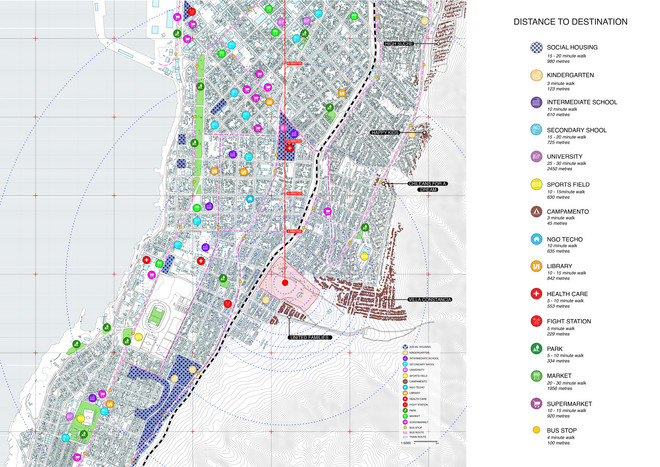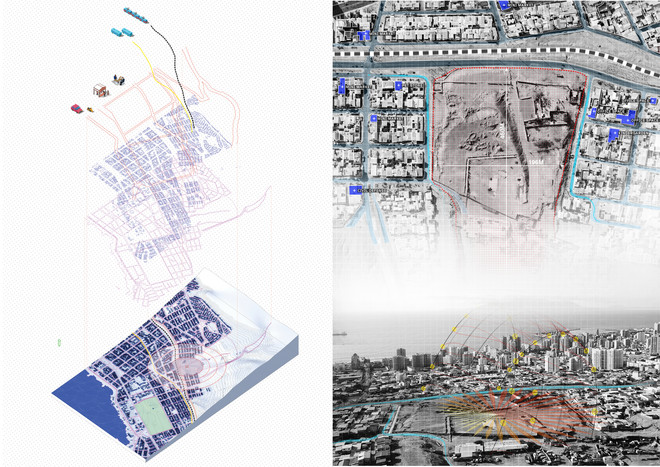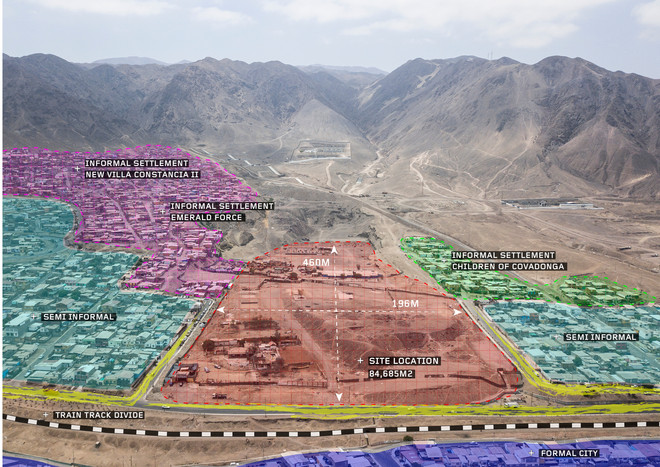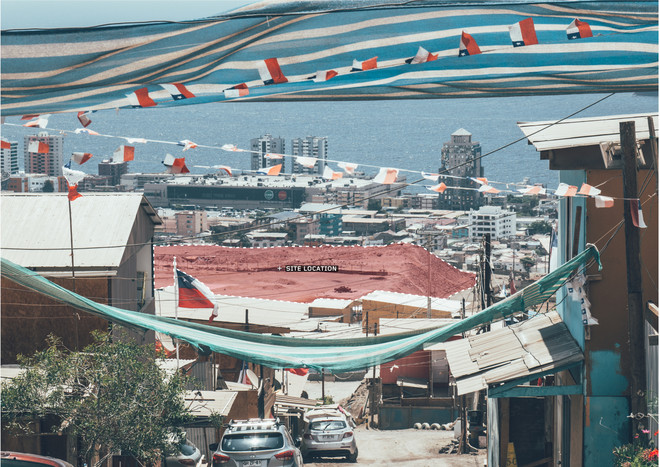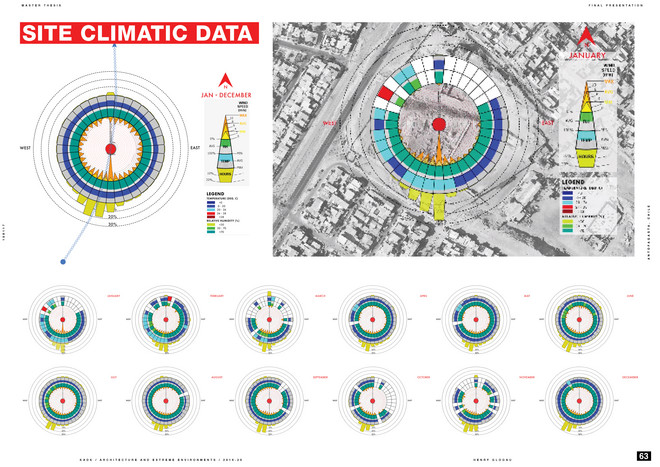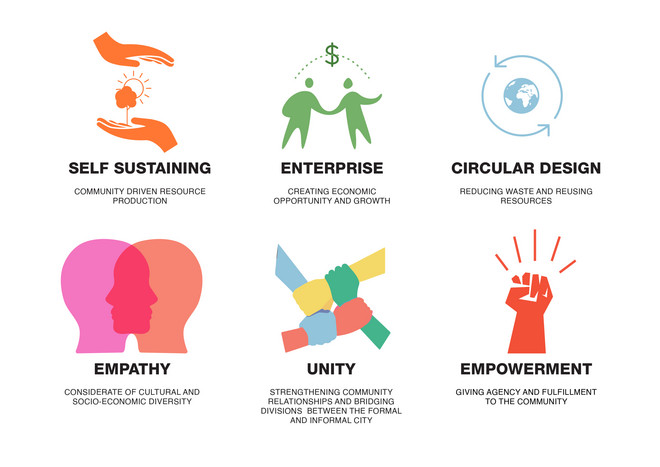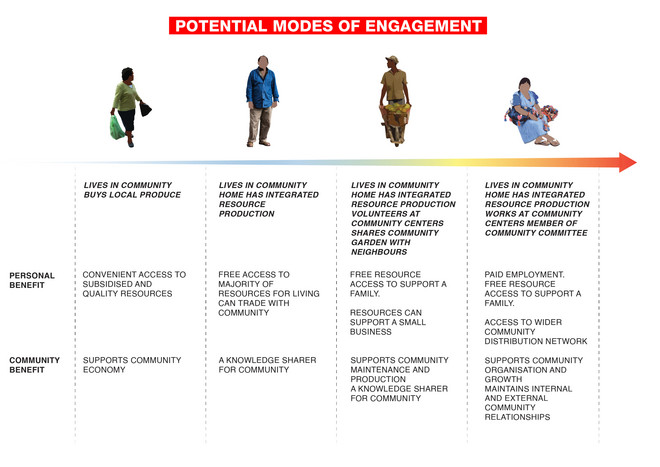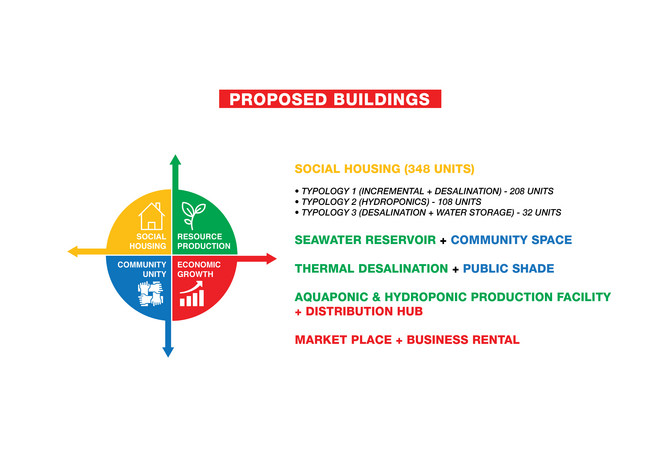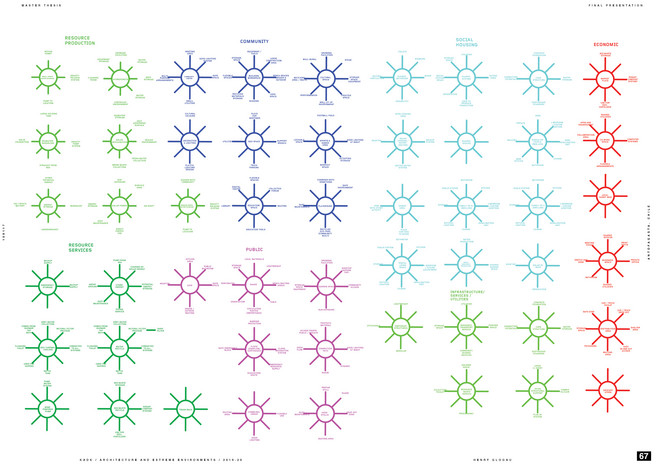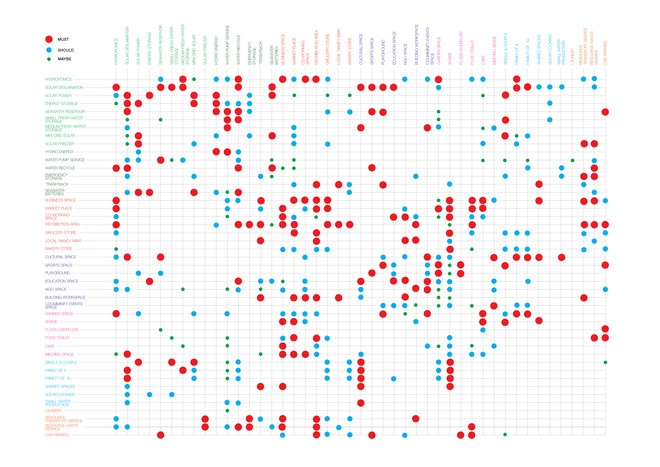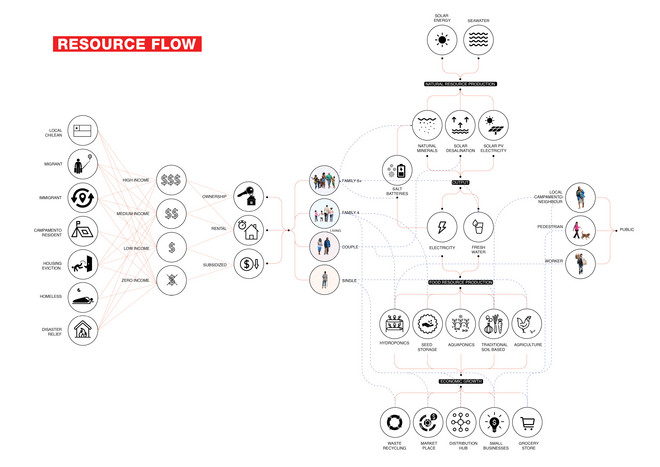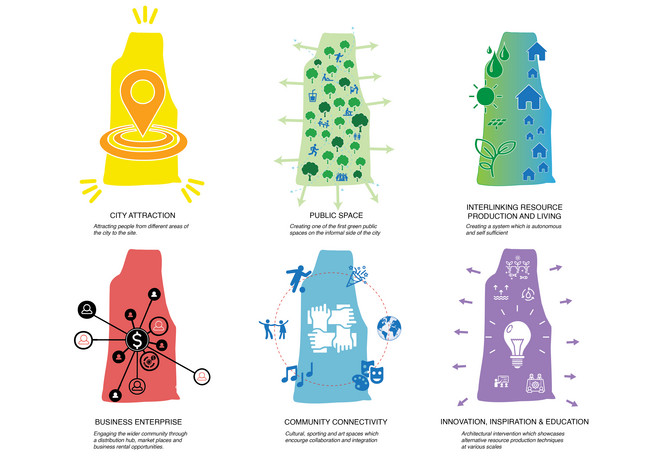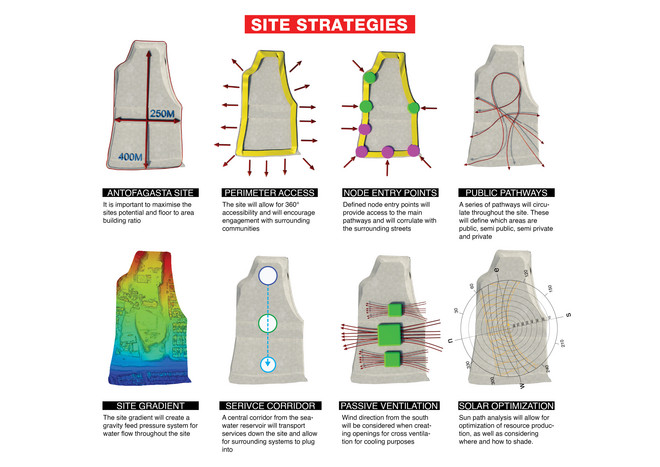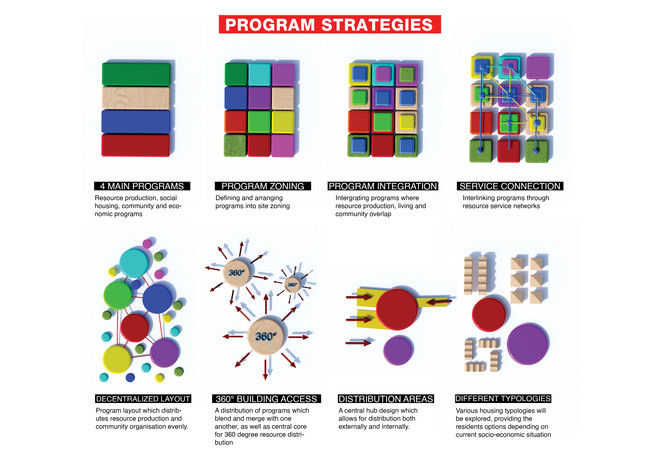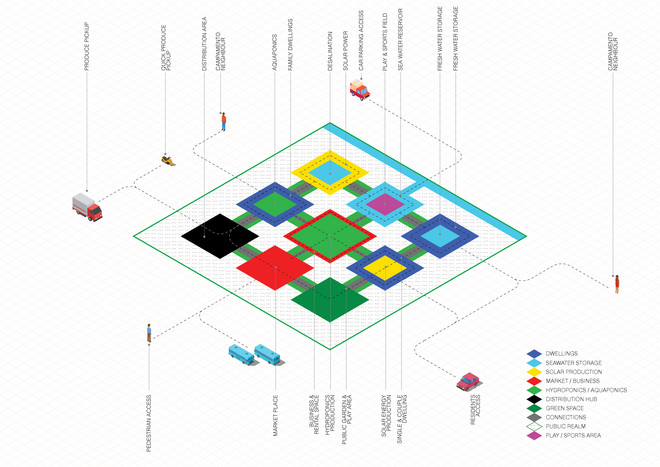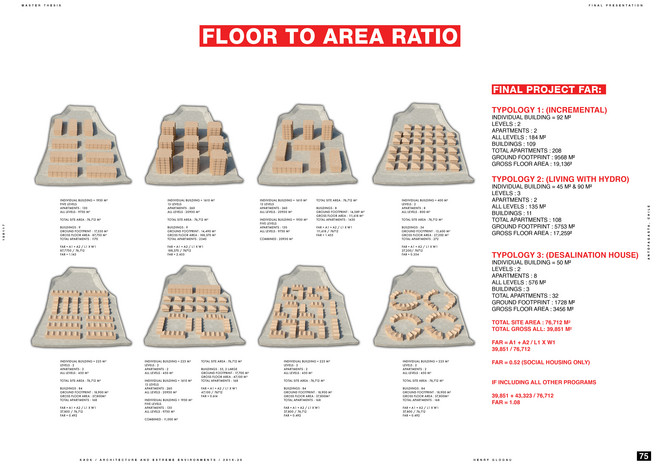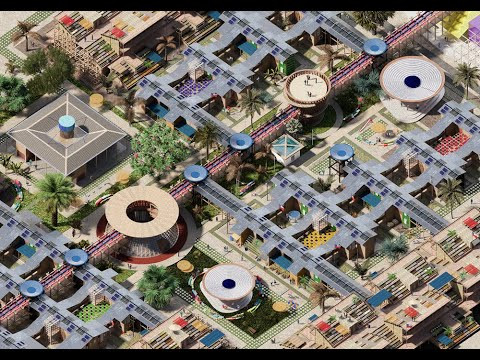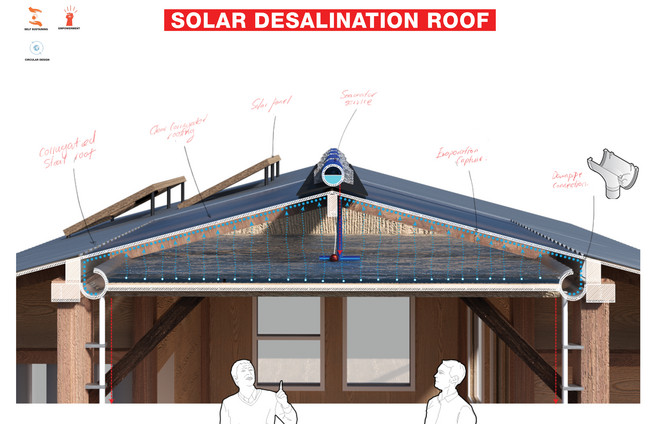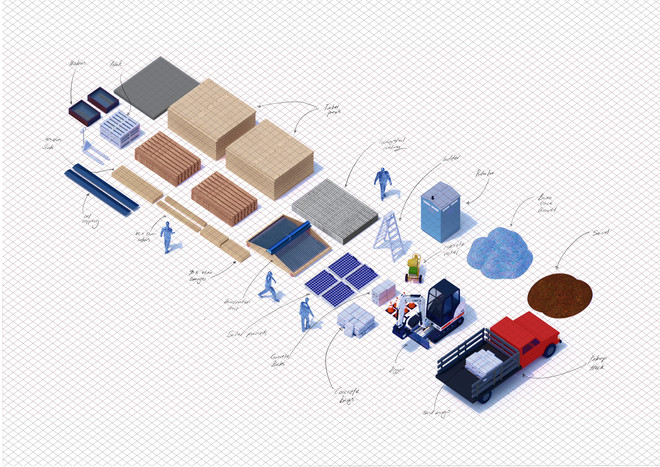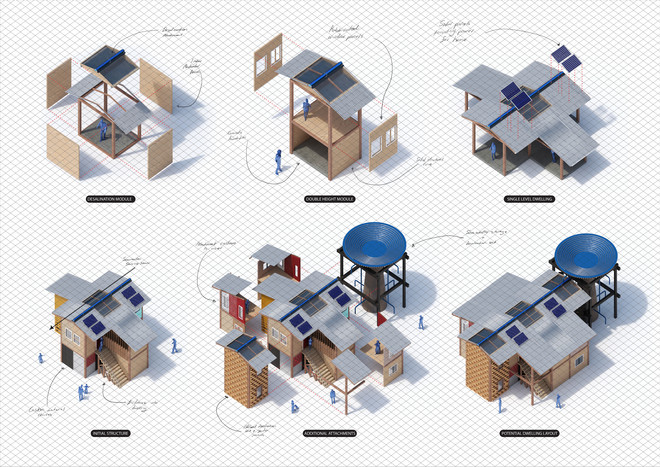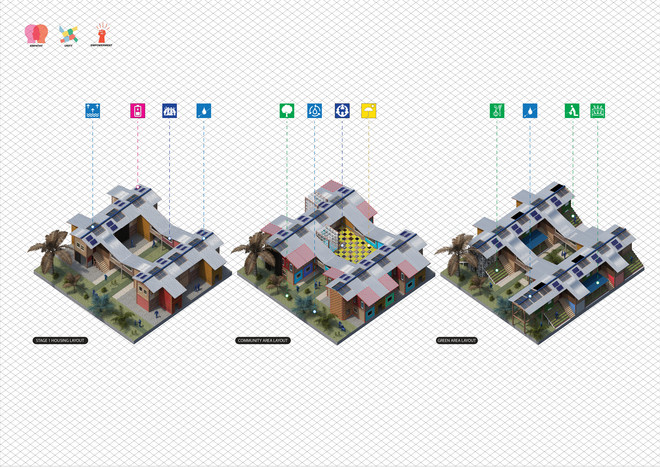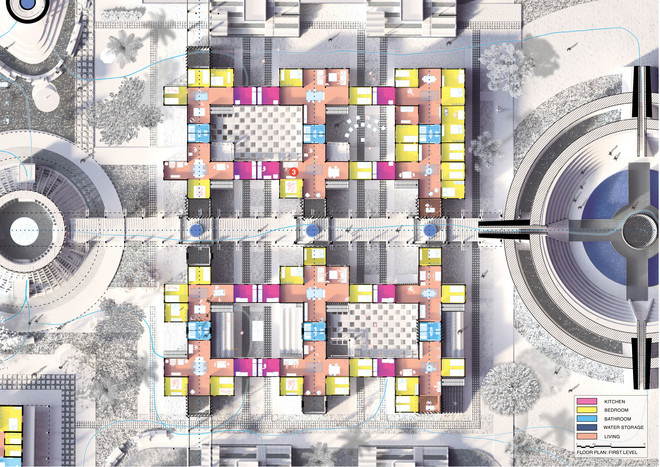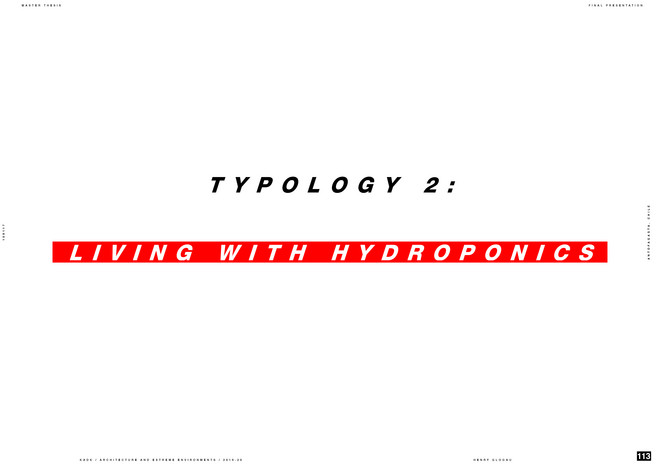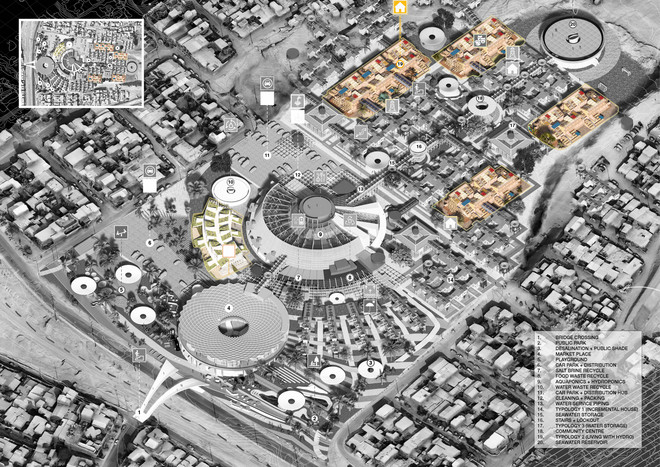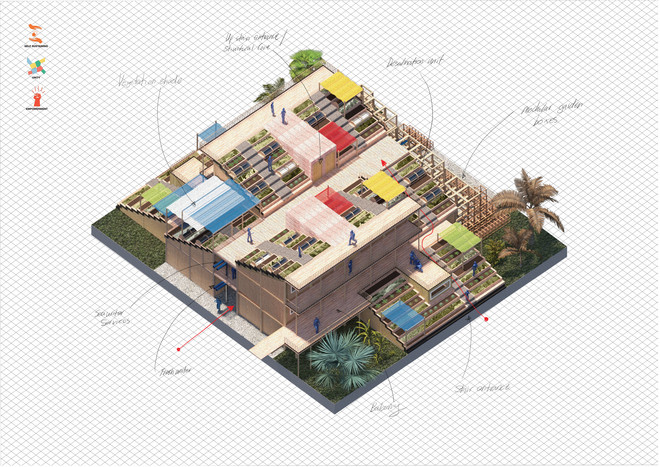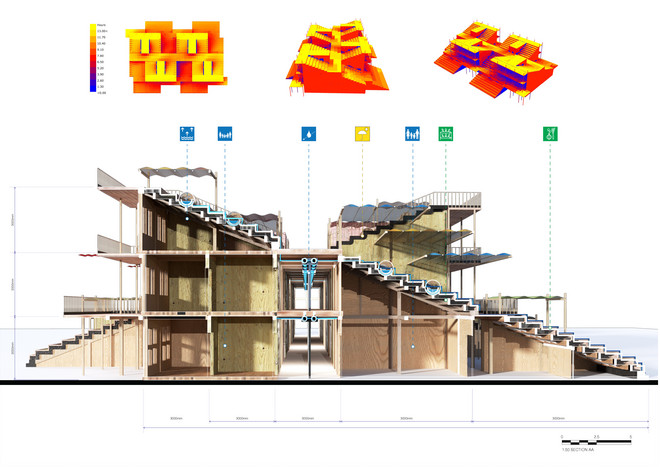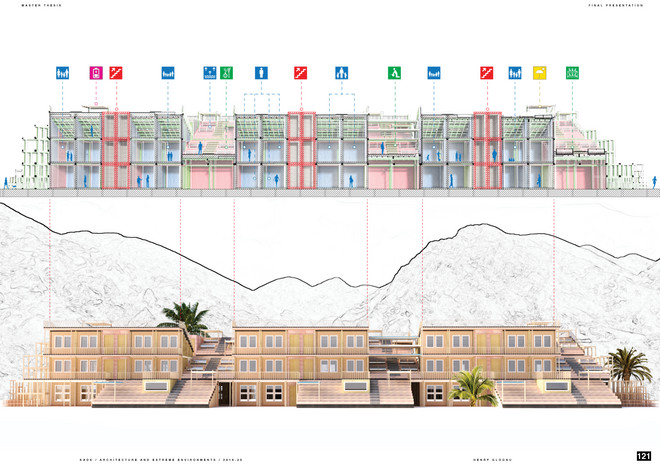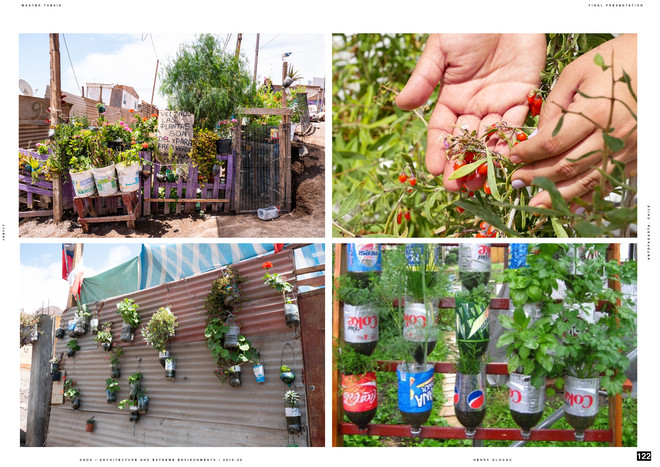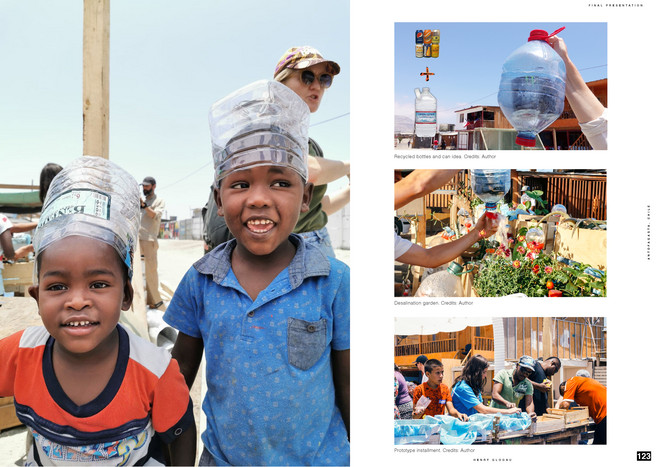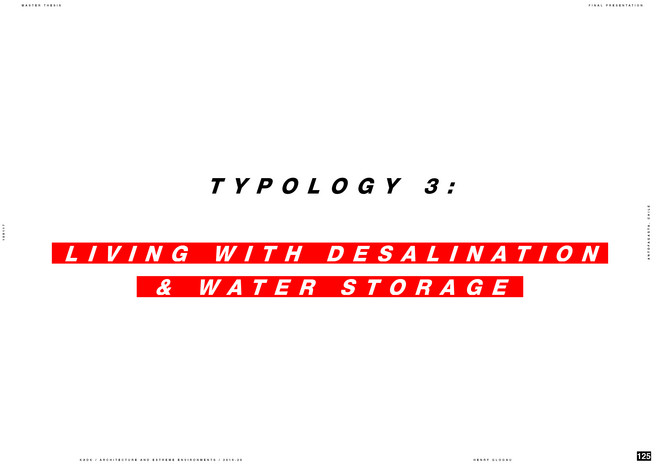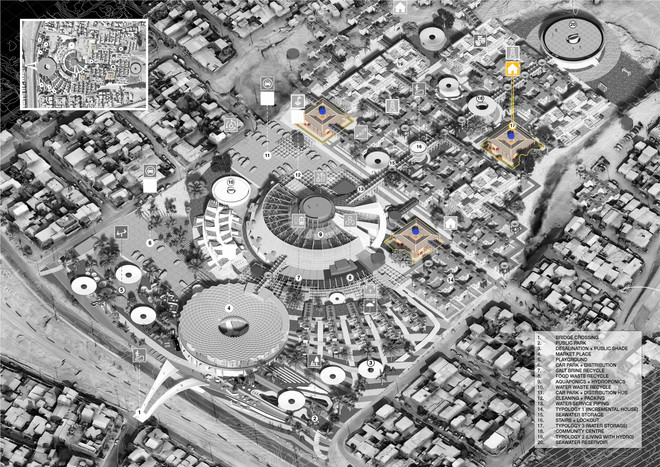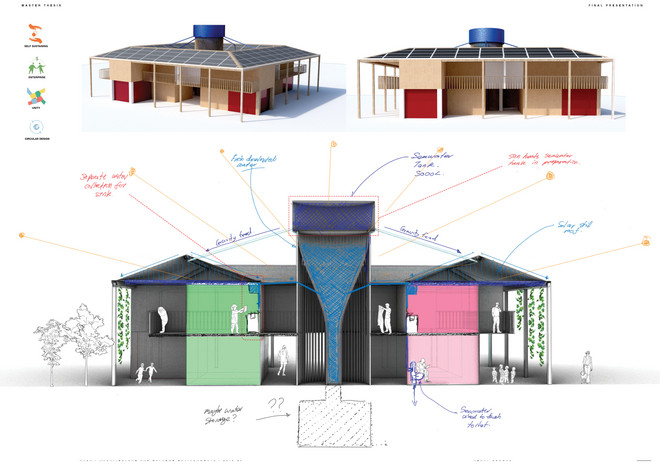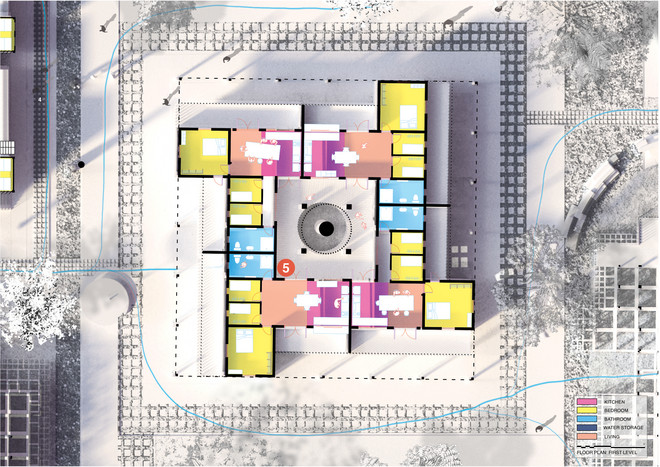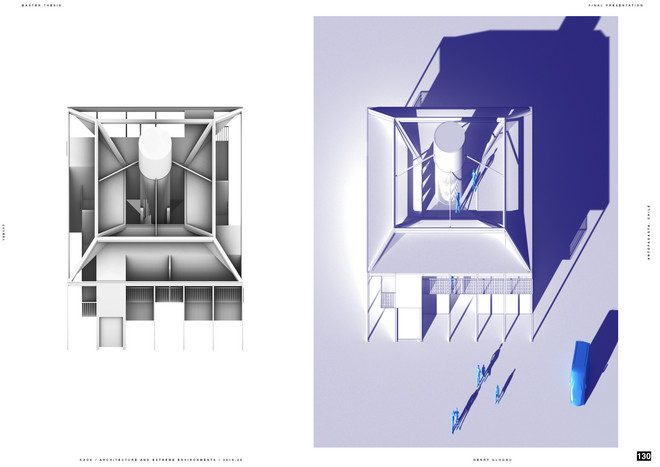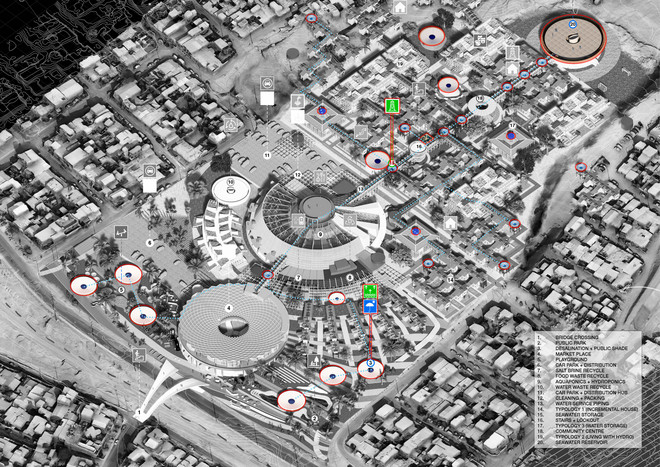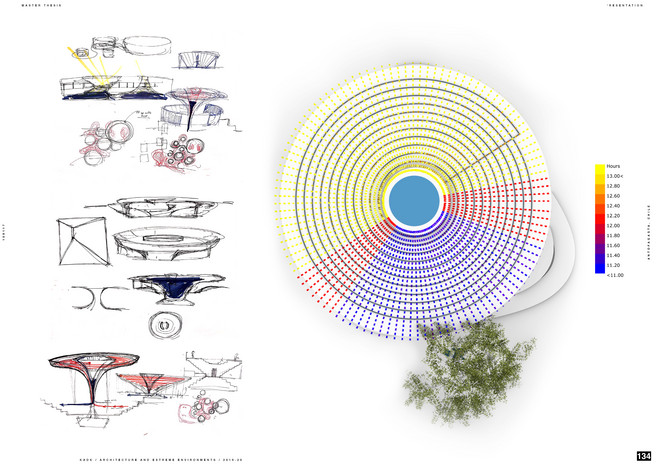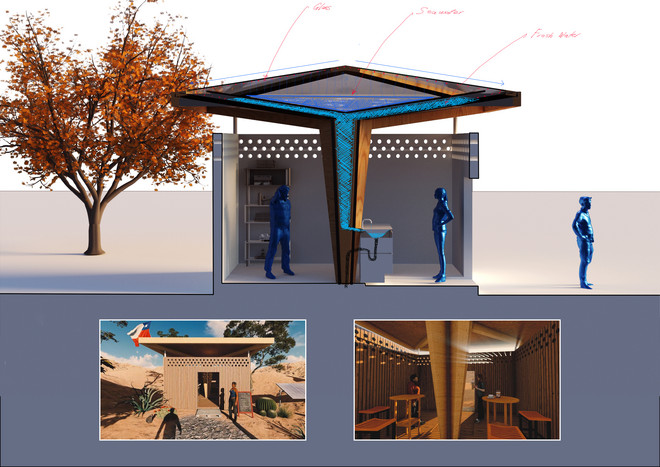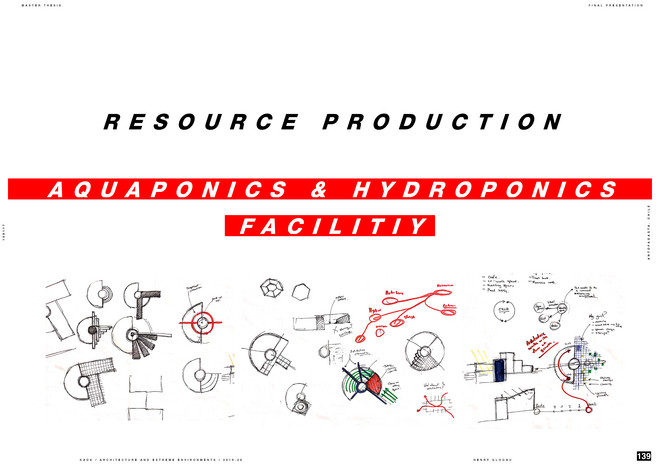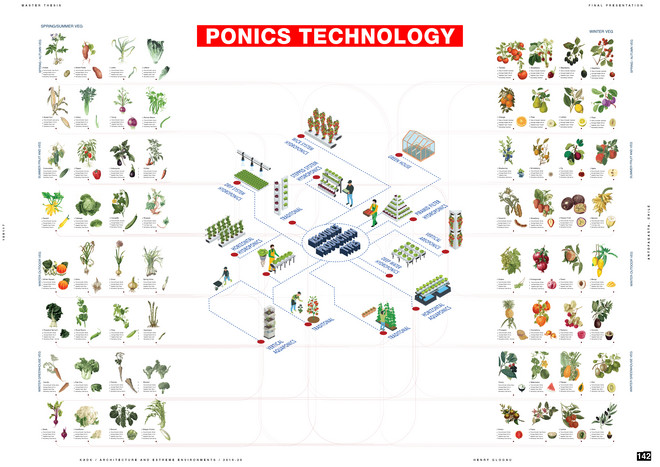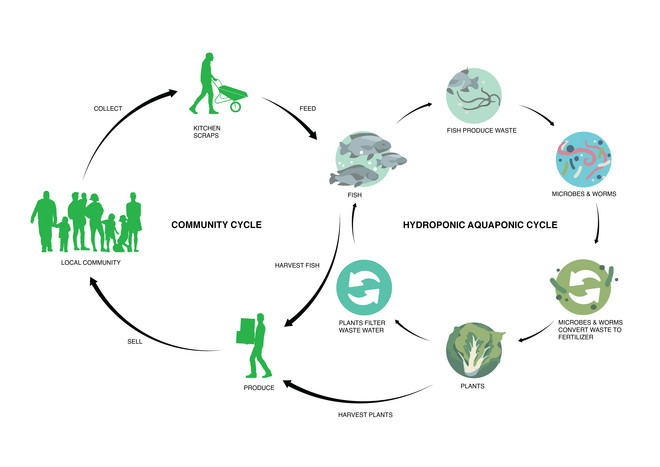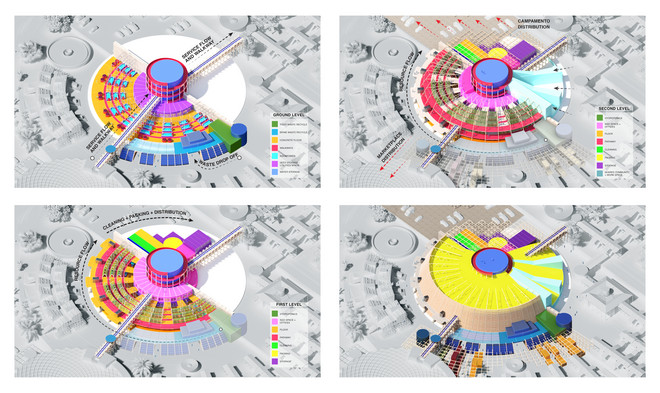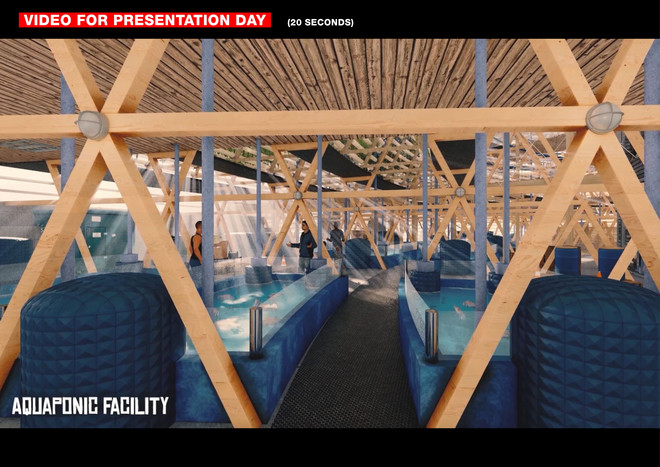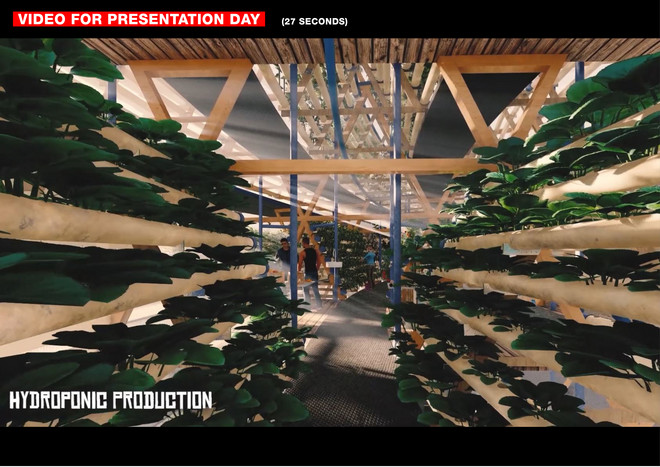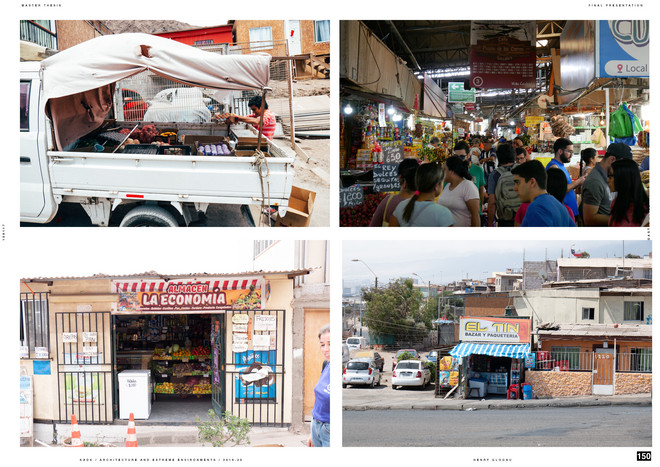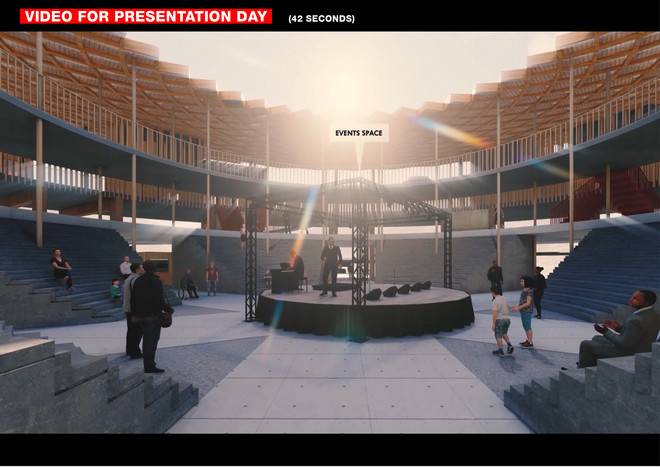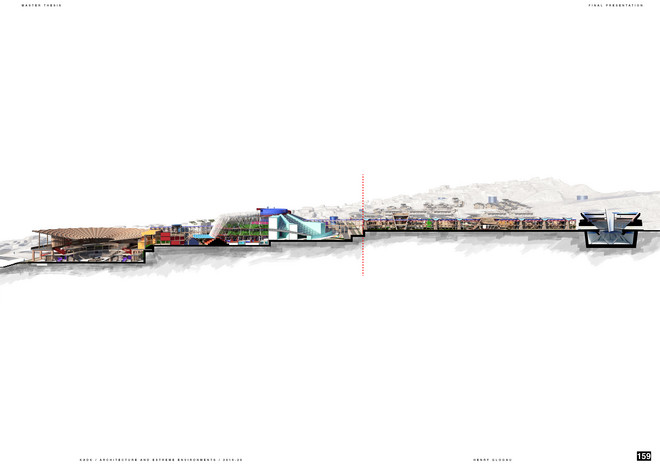
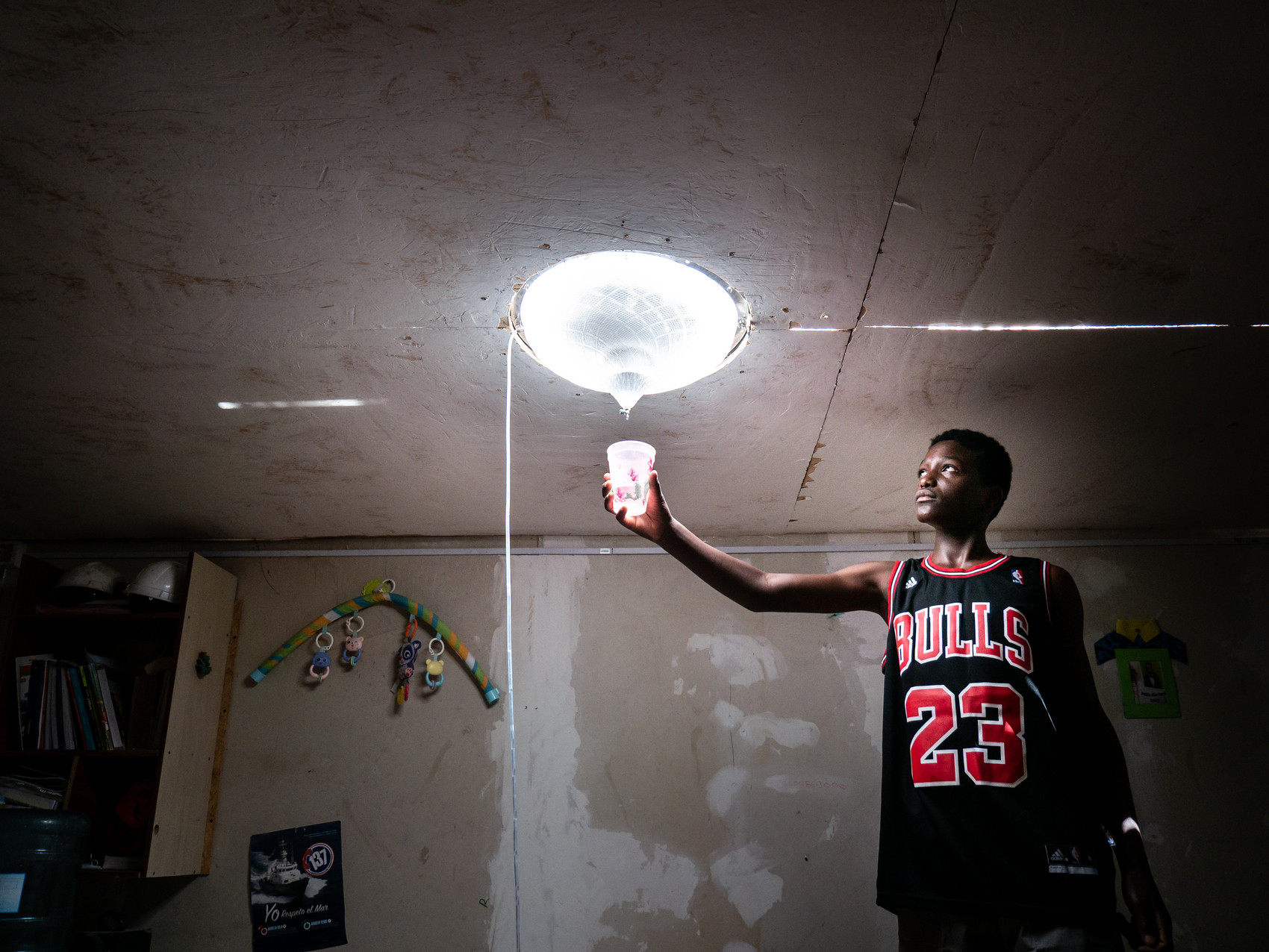
RESOURCE REVOLUTION
"Informality within cities needs to be urgently addressed for the creation of safe, sustainable, and prosperous communities. ‘Resource Revolution’ is a thesis project based in Antofagasta, Chile. The proposal explores how to create a social housing eco-system that empowers communities to become self-sustaining through natural resource production. This proposal is a discovery of resource autonomy, provoking thought of alternative ways of being. It investigates how architecture can play an active role in merging resource production with living.”
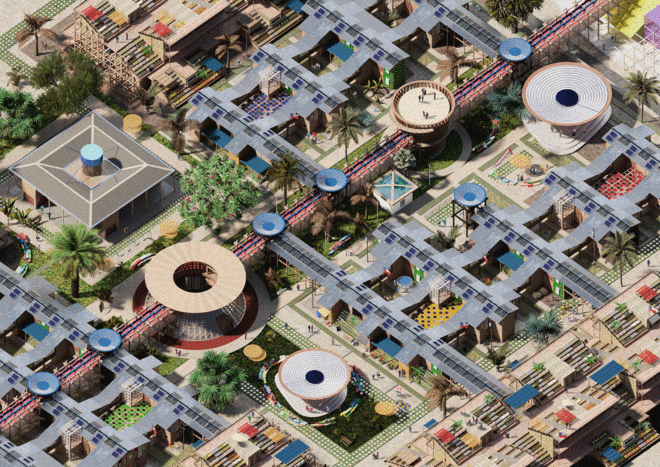
GLOBALLY, WE ARE FACING INEVITABLE RISING URBAN INFORMALITY
More people are choosing to live in cities - Consequently, house prices have exponentially increased relative to income. By 2050, it is predicted that 3 billion people will be living within informal settlements. Chile is the most developed and urbanized country in Latin America with 87% of its total population living in an urban area. We can see this rise of informality within Chile, with over 100,000 people living within 800 informal settlement camps. Chile's rapid and significant urban growth was primarily caused by an economic development model implemented in the 1970s by Augusto Pinochets militarised government. This economic boom, also meant a large migration growth, with people seeking job opportunities
PROTOTYPE
During a month-long trip, I was interested in addressing some of these current issues within the camps. I considered alternative ways of utilizing Chile’s resources to our advantage.
I took a holistic approach to provide Chile’s coastal informal settlements with water, light, and energy. The prototype utilizes Chile’s abundance of solar energy and seawater to create a solar desalination skylight, which emits natural diffused light, produces drinking water, and utilises leftover salt brine for energy creation
This was a prototype idea which is something I believe has the potential to be scaleable. I found that the prototype became a departure point for conversations around access to resources, and opened the gate into the challenges the community were experiencing. What I realised was that further potential of innovation could be found when it was translated into social innovation. I collaborated with the residences, where we created a solar desalination garden, using materials that we found in their community. It was important to work with them to develop the design to what made sense for them locally.
Spending 3 weeks with different communities I learned a lot about life within these camps. One thing that people spoke about was the divisions between different nationalities within the camps. They also discussed the binding elements within the community, that provided common ground between people. These were things such as; Sports, culture and arts, children, crisis, and NGO support. Through our collaboration with the NGO TECHO, who work with the camps, I was able to meet a diverse range of people.
HOW CAN CHILEAN PEOPLE FIND UNCONVENTIONAL WAYS TO ACCESS COMMON GOOD RESOURCES?
During our one-month long fieldwork in Chile, we saw the consequences of this political instability first hand, with people fighting for constitutional change. one significant failure of the Chilean Government is providing its citizens with basic water access, with over one million people who do not have access to clean water in Chile. Something we consider a basic human right. The consequences of Pinochet’s dictatorship are still felt today. Ongoing privatization has allowed corporations to control essential resources, depriving the general public. Especially those in the lowest demographic. This issue is further intensified with Chile facing the worst drought in 60 years.
The first people to feel these consequences are those living within the informal settlement communities. One challenge they face is safe access to clean water - Which is expensive and in some communities it can only be dropped off by a water truck once a week. Another challenge is access to safe electricity - Which they depend on by hacking into formal city power lines. This has resulted in devastating fires, which have wiped out communities and all their belongings. During our fieldwork, we spent 3 days helping to rebuild one of these communities.
SPECTRUM V. OPPORTUNITY
For this project, I imagined there would be spectrum of opportunity and amount of engagement that was required. I considered how I could be empathic with different community members’ time, money, and capacity. For example; someone might not have so much time to be involved here, but they have access to subsidized quality food and water. Which in turn supports the community economy directly. Someone might have less money but more time, so they can volunteer and be more involved with resource production. Therefore, free access to resources.
This spectrum was then linked to the resource and stakeholder flow schematic. Through this system, I could start connecting the raw resource of solar energy and seawater and how it developed into certain applications like energy, water, salt minerals etc. This transformation was linked with how different stakeholders might be living and how they could utilize them.
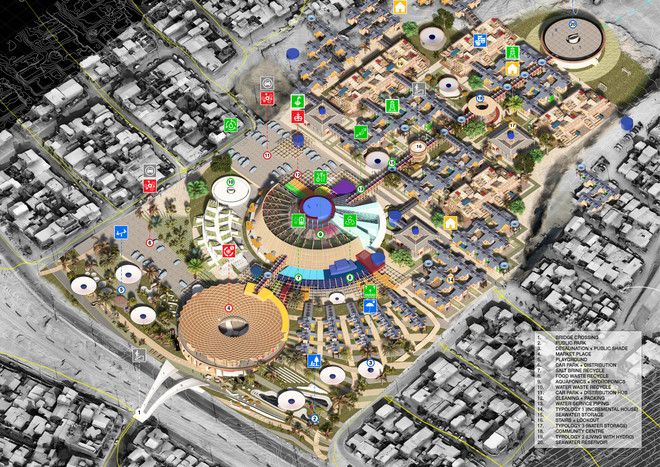
INCREMENTAL HOUSE - TYPOLOGY ONE
A module system that is built to expand and connect with others. The users can design their own living conditions, incrementally making additions that best suits their needs. These interlocking units, create a woven community structure which provides residents with the opportunity to have shared investments with their neighbors - strengthing unity within the community.
Given that the site is near the existing informal settlements which will inevitably grow onto this site - I see this typology as one which could act as an interface between the housing development and the wider community. I imagined that over time the design would be hacked, plagiarised, and reassembled to let others take advantage and pick and choose what living with resources could look like for them.
Each house incorporates a solar desalination roof which provides freshwater and connects other service utilities. There are 202 of these units - each with the potential to produce up to 30-40 litres per day.
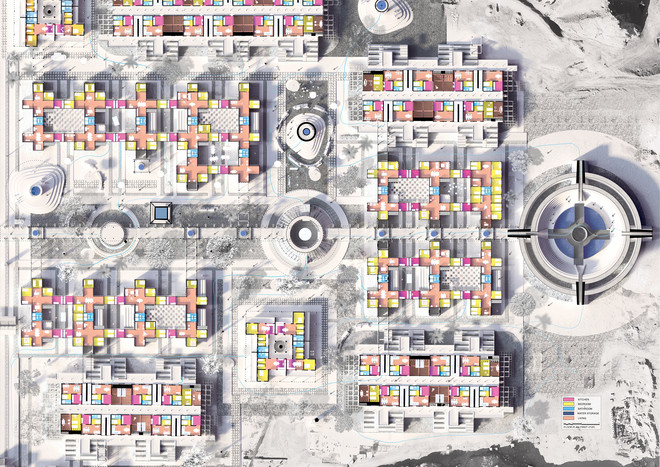
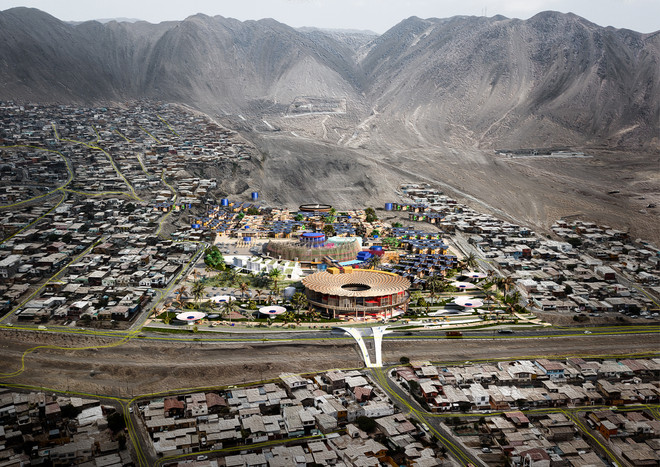
Det Kongelige Akademi understøtter FN’s verdensmål
Siden 2017 har Det Kongelige Akademi arbejdet med FN’s verdensmål. Det afspejler sig i forskning, undervisning og afgangsprojekter. Dette projekt har forholdt sig til følgende FN-mål